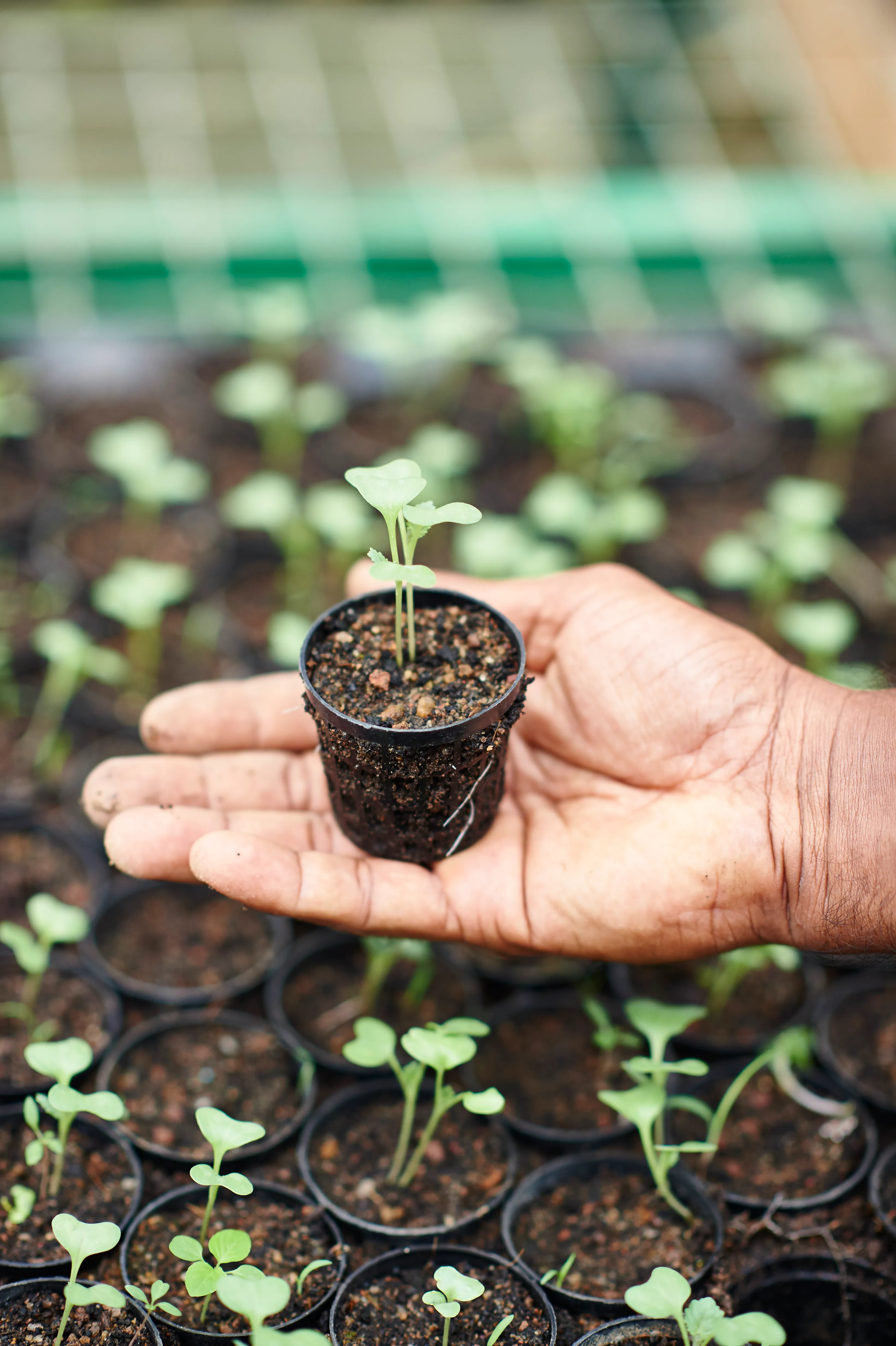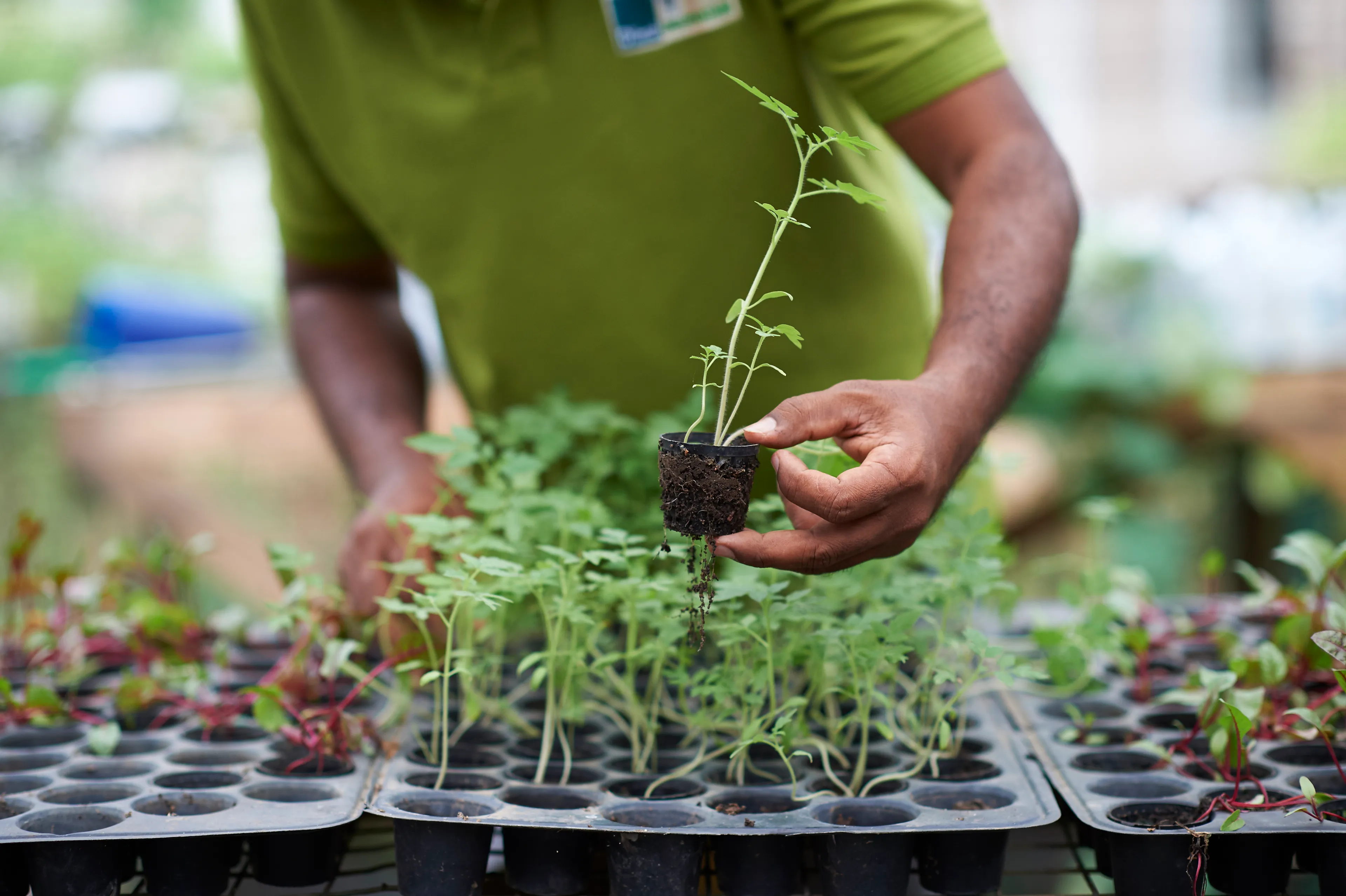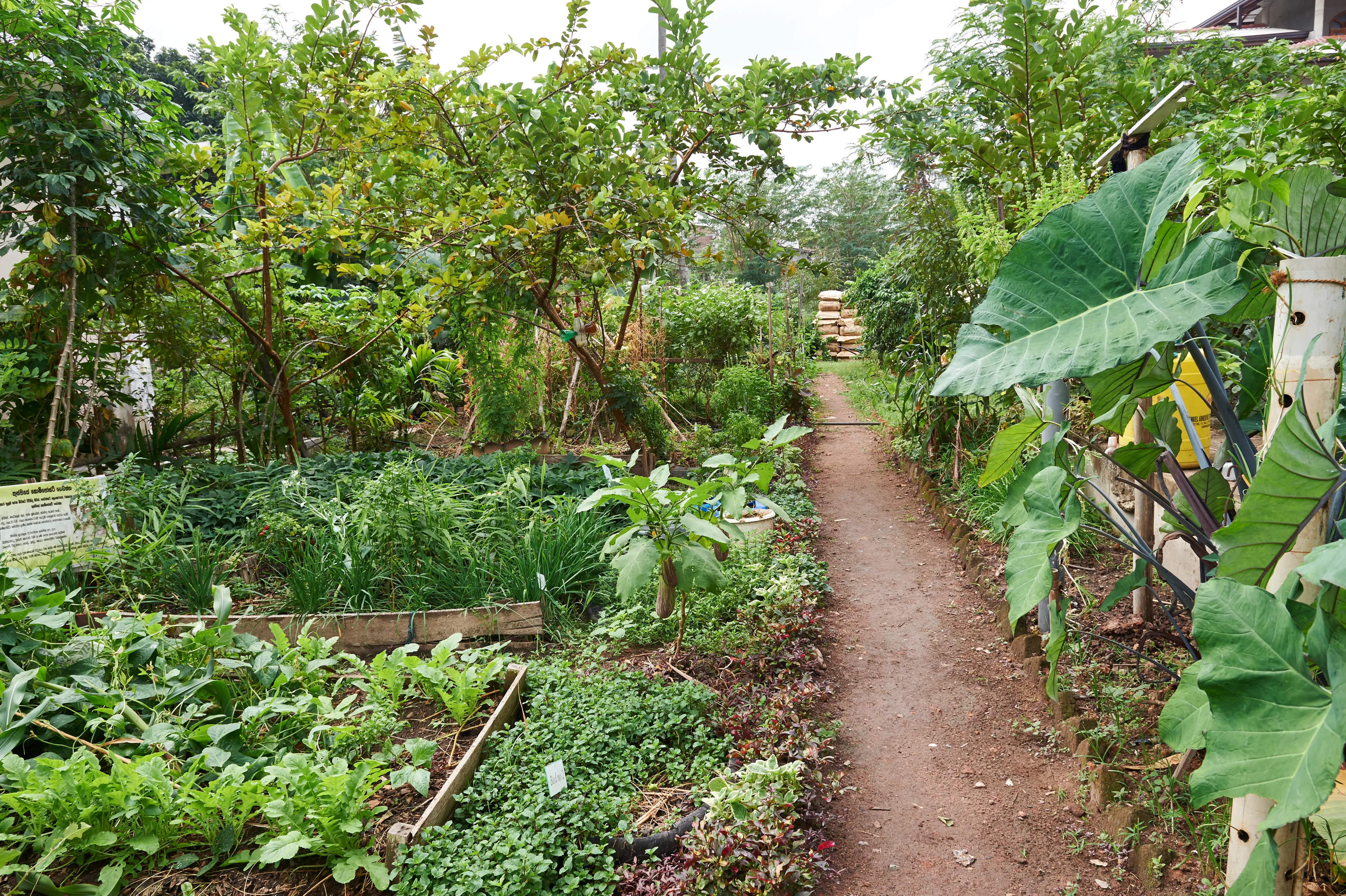How to make the best compost
You might have heard of composting before. It is the process of turning organic waste into a rich soil amendment. This means you can put your kitchen scraps and old newspapers to sustainable use! Here's a quick guide to get you started.
5 Practices to follow
Practices
Compost your kitchen waste
1. What ingredients to compost
You probably know by this point that compost is made out of organic waste. This includes anything of natural origin like plants and food.
Organic waste can be divided into two categories; green and brown materials. Green materials would be kitchen scraps, grass clippings, bread crusts. Brown materials can be leaves, paper, hedge trimmings, straw. A simple rule of thumb is to use one-third green and two-thirds brown materials.
This is because green materials are rich in nitrogen. Too much nitrogen rich material decomposes slowly and becomes dense. This is where carbon rich material is needed to balance the consistency. Carbon rich material might be a bit drier and slower to decompose. If that's happening with your compost pile, you'll know to mix in some greens.
Here are some more examples of green waste:
- Egg shells
- Fruit and vegetable peels
- Coffee grounds
- Old flowers
- Used tea
And brown waste:
- Newspaper
- Cardboard
- Pine needles
2. What not to compost
If you want to keep your compost clean and free of smells, steer clear of things like raw meats, fish and dairy products. Avoid using fats and oils too. Do not add anything that could harm your garden or crops, like plastic bags or pesticides.
Compost piles need variety, so don't put too much of any one material at once. Add small quantities gradually, mixing them together with other materials.
3. Choosing the right spot
Whether a heap or a dedicated compost bin, it is crucial to find a good spot. Your compost pile will need enough room and be sheltered, out of direct sunlight. Make sure that it's away from other plants, and not too close to living spaces. Air circulation is necessary to prevent odours and pests. A sheltered part of your garden would be great. If you don't have access to a garden, you can still compost organic waste with an indoor compost bin.
Indoor compost bins are usually made of plastic and come in various sizes. These bins are ideal for smaller spaces such as kitchens and bathrooms. Make sure you place them somewhere dry and ventilated, and protected from pets and children.
4. How big should my compost pile be?
A good rule of thumb is to keep your compost piles between three foot and five foot (one meter and one and a half meters). If they're too small, they might not get hot enough do decompose well. If it's too big, you'll have trouble getting the pile turned over regularly, and it might hold too much water.
Compost bins come as small as the size of an A3 sheet. Outdoor compost bins get a lot bigger than that, but an indoor compost bin doesn't have to take up a lot of space, especially if you're mainly going to use kitchen waste.
Building a compost pile
1. Chopping your material
A relatively easy way to make your compost pile more efficient is by making sure that the material going in is as finely cut up as possible.
The smaller the waste, the faster it decomposes. A finely cut up material has a greater surface area, which makes it more accessible for the microbes that break it down. The same way wood curls burn up faster than the same volume of wood as one solid block, one of the most efficient ways to speed up the composting process is by cutting your material up.
So if you can, shred your newspapers, give your kitchen scraps an extra chop, or run the lawn mower over your plant clippings, as it will accelerate the process.
2. Building a pile in layers
Once you have found the ideal spot for your compost pile, and enough material to start composting (tip: it is easier to compost in the fall with all the dead leaves and other natural waste that occurs during that time), it is time to assemble.
For cold composting you can keep adding new material to your pile and take finished compost from the bottom. Green waste is best covered by soil or brown waste (you can also put it in the middle of the pile), so that it won't rot or attract wildlife.
If you're hot composting, it's best to collect the material for your pile and let that compost without adding new material to it. By putting different materials in different layers you can provide drainage and encourage oxygen circulation.
Put twigs, leaves or (old) potting mix on the bottom to provide drainage. Then put a layer of green waste, then brown waste, and so forth. The layers should be about 10-15 centimetres thick, with more brown waste than green waste going in.
It's best to cover any exposed green material with a good amount carbon-rich brown material to prevent the greens at the surface from rotting and smelling foul.
You can also add a layer of soil on top to keep everything covered and prevent any odours from spreading.
Managing your compost pile
1. Stir your compost pile
Oxygen is key to good composting. By keeping your pile well aerated, you're maintaining a better balance between nitrogen, carbon and water. While not essential, turning your pile once every one to two weeks will heavily accelerate the process, and result in a more consistent compost. A cold composting pile does not have to be turned.
2. Watering your compost pile
Microbes thrive in moist environments. You can water your compost pile if it is too dry, but don't overdo it because a very heavy and dense pile could create mould.
If you do water your compost pile, make sure that the water doesn't wash away any valuable nutrients from the pile. You can use a hose with a spray nozzle to direct a fine mist onto the surface of the pile. Or you can sprinkle the compost pile with a watering can. If you have a lot of leaves in your compost bin, you may need to water more often.
How to reap the rewards
1. When is my compost ready?
The composting process takes about three to four months if you're actively monitoring your compost. This includes turning it and getting the balance right. Otherwise your material will still decompose, but it might take up to a year or so.
You can tell your compost is ready to be used by its appearance and smell. The colour should be dark brown, it's consistency like soil, and it should not be too moist anymore. If it has a strong smell or smells rotten, then it might be too wet, or need to be mixed with more materials. Once it starts smelling like fresh earthworms, or fresh bread as some compare it to, it’s ready for planting!
2. Feeding your garden with compost
Once your compost is ready, it is time to finally make use of your decomposed waste and close the (re)cycle. You can spread it onto your garden beds, and use it for your flower bushes. Adding compost to your soil improves nutrient levels and increases plant growth. You can also use it to improve the appearance of your lawn. Simply sprinkle it around your lawn and rake it in before watering. It will help prevent weeds from growing.
3. How much compost do I need to add?
It depends on the type of soil and type of compost you're using, but as a rule of thumb adding between 2 to 8 centimetres should suffice. You'll need more for sandy soil than for clay soil. Keep in mind that adding compost to your soil may affect the salt concentration or pH, so if you want to prevent that, it's best to do some research about the composition of your soil and compost. For most people the 2 to 8 centimetres should work well enough though.
The different types of composting
1. What does composting mean?
The basic definition of composting is simple, by putting together a variety of organic waste material, in time natural processes will break it down. There are several methods to do this, like cold composting and hot composting for example. It is essentially the same process, with hot composting being the optimised version of cold composting.
2. What is cold compost?
Cold composting is as easy as putting any amount of organic waste in a sheltered place. It requires very little maintenance but will take considerably longer to turn into compost, about a year. It also smells more so it's recommendable you have a (large) garden so it won't bother anyone.
3. What is hot compost?
Hot composting is done in warm weather and requires more maintenance to keep all the materials well aerated. By hot composting, raw waste material can decompose in as little as two months, making it more efficient.
4. Should I do hot or cold composting?
In this guide we're going over the basics for both cold composting and hot composting. Keep in mind that hot composting is just a way of accelerating the decomposing process by balancing the nitrogen, carbon, oxygen and hydrogen present (which we will elaborate on in a moment).





